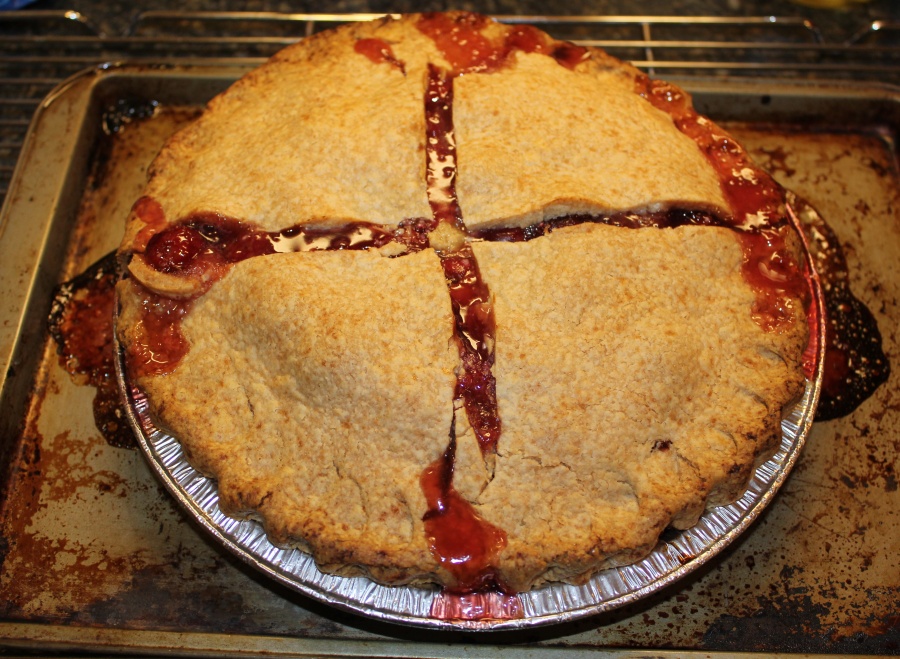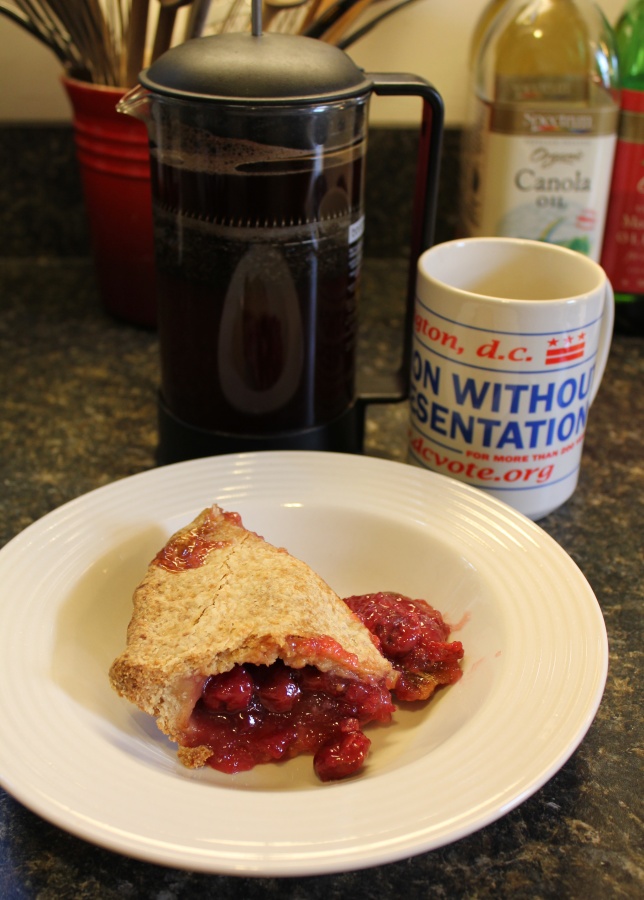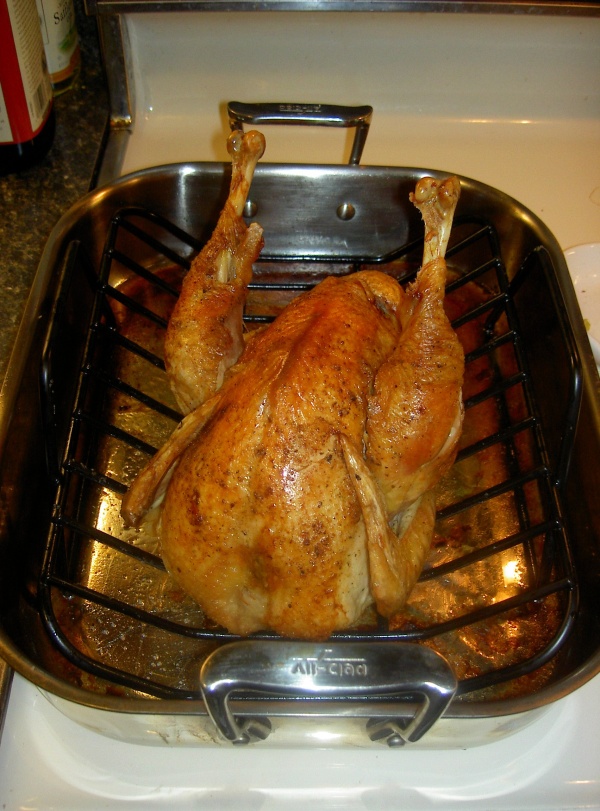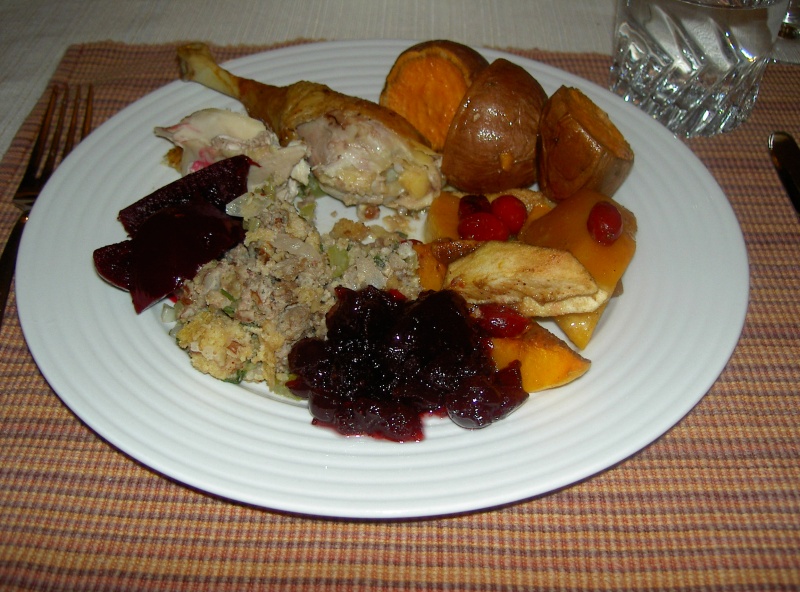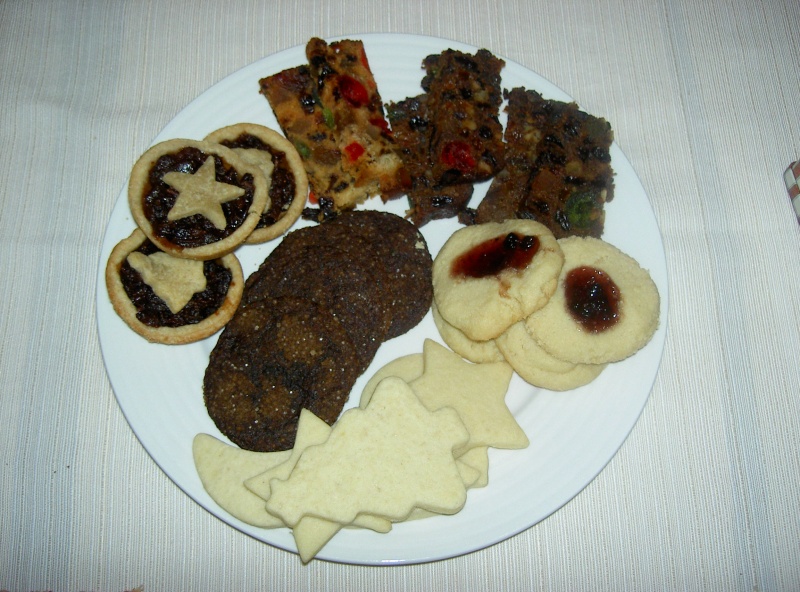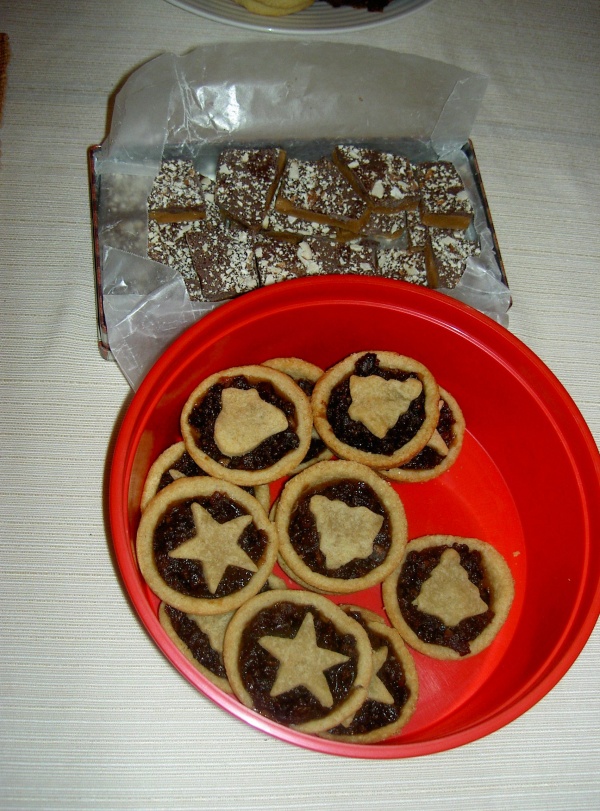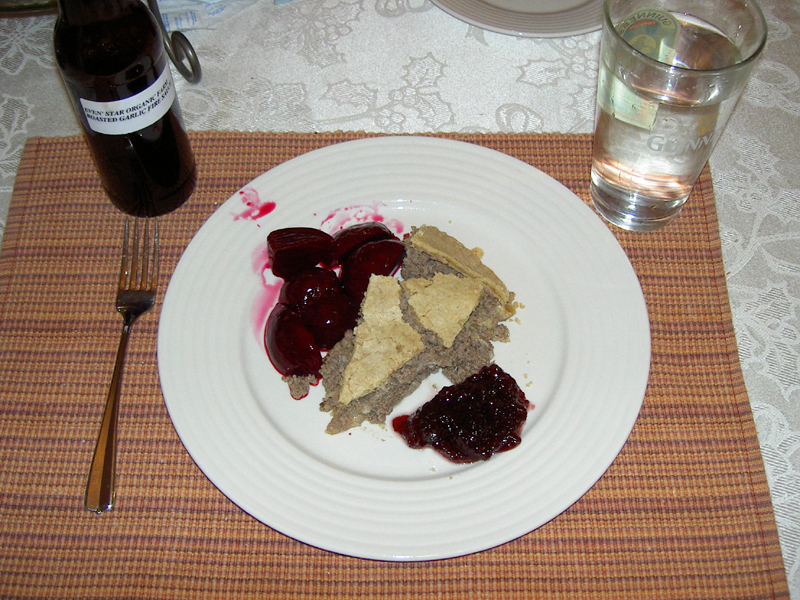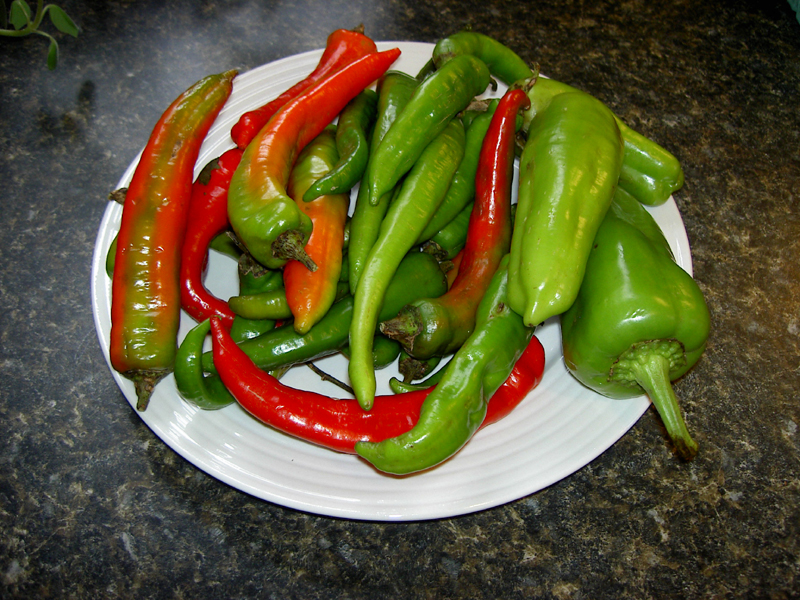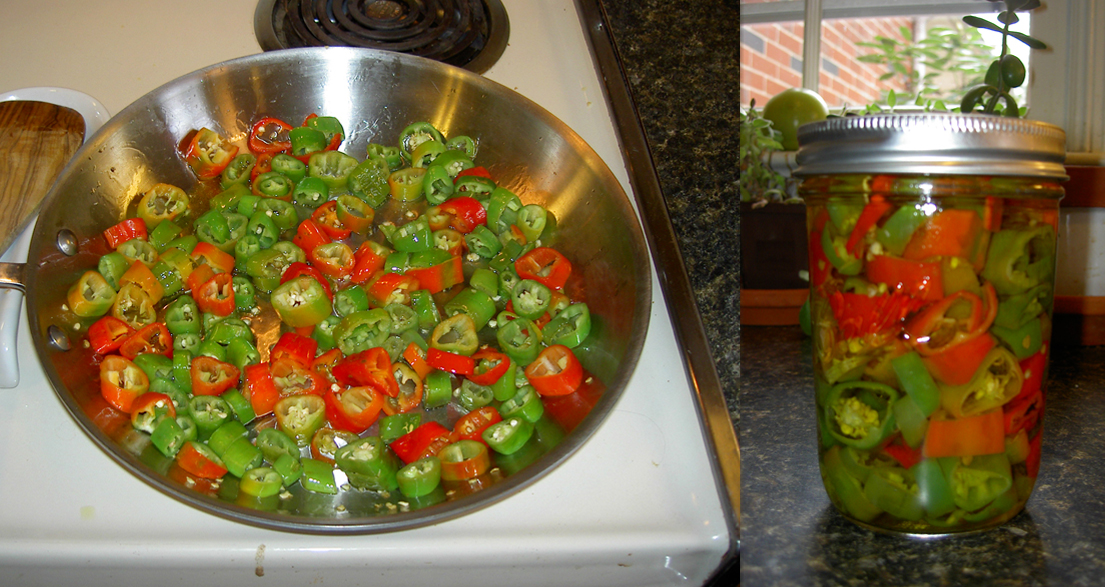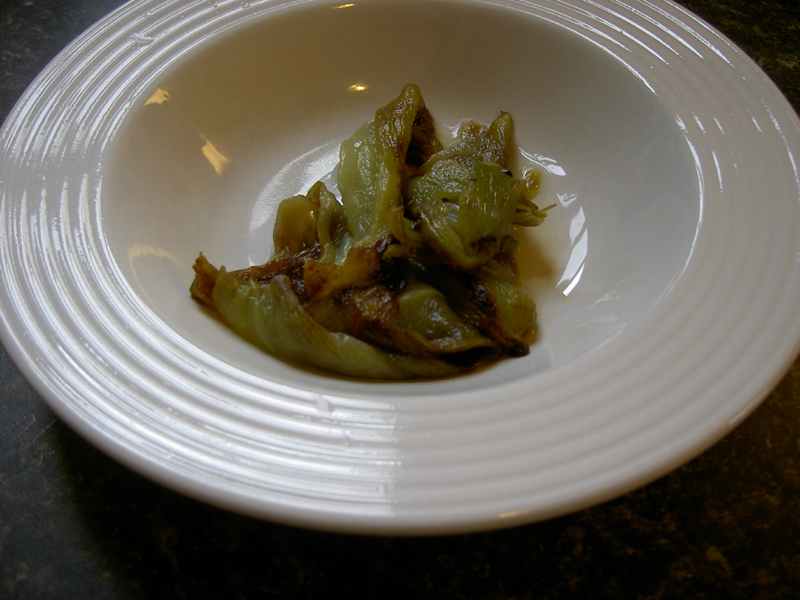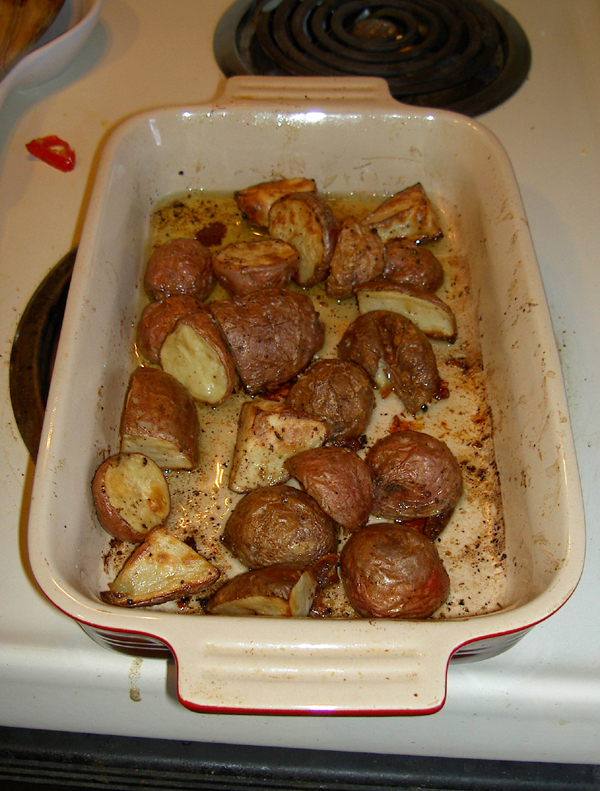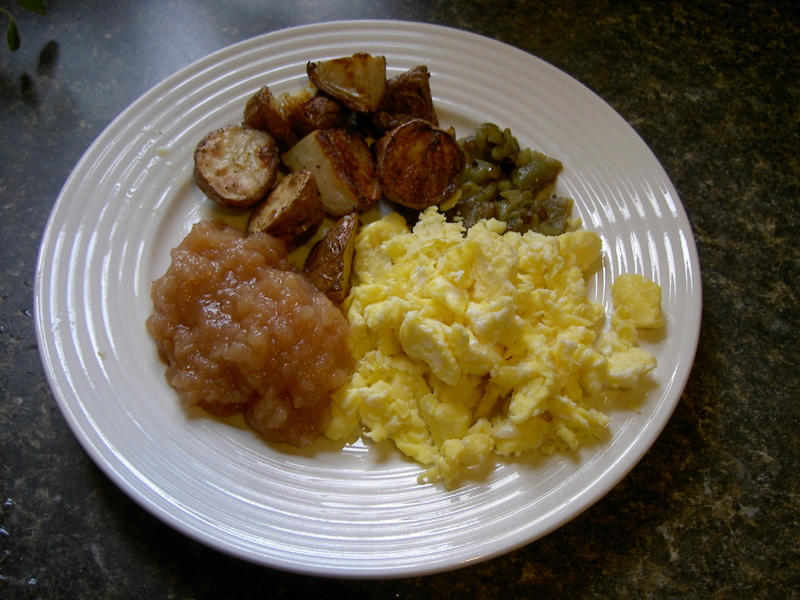I didn’t know about the Can Jam challenge until December, and it’s probably for the best: there’s no way I could have canned anything more than the three things I made last year. Reading through Local Kitchen’s summary of the challenge was interesting, though, as I realized that I’ve canned something in nearly every category at least once. Just for the heck of it, I sorted through my canning results of the past few years to see how they matched up to the challenge categories. In the process, I discovered that I was truly woeful at documenting the vast majority of these efforts, so I’ve annotated the list somewhat. I’m definitely not at the stage of making up my own recipes, so I’m excited to get back in the swing of things this year and try some of the hundreds of mouth-watering recipes generated by folks who actually participated in the challenge.

The canning larder. Top shelf: mincemeat, brandied peaches, pear mincemeat, pear applesauce, cranberry sauce, applesauce, cherry sauce. Bottom shelf: cherry conserve, quince jelly, apple butter, plum jam, pear jam, pear butter, apple chutney, onion relish, pepper jelly, pickled beets, lemon-garlic pickles, bread and butters, sweet and sour relish, pickled pumpkin, summer squash pickles.
- citrus: Traditional Preserved Lemons, using Meyer lemons and a recipe from The Ball Complete Book of Home Preserving [2008]: I was determined to make these, as I had visions of Moroccan dishes dancing in my head, and they were the last thing I did the night before we left for our holiday drive in 2008 (in the end, I only used them twice in rice and they mostly had to be thrown away when the went off; which won’t, of course, stop me from making them again the next time organic Meyer lemons are available); Sour Cherry Conserve [2009] (also stone fruit), from the Ball book: this was the only successful cherry recipe, and while it’s quite tasty it’s not the most appealing-looking which will teach me to only use the freshest cherries for canning (and to not go overboard at the market); Lemon Garlic Pickles [2009] (also cucurbits), from the Ball book: these were nice, but I think I vastly overestimated my capacity to eat pickles as we’ve only made it through the one jar we opened for Thanksgiving two years ago.
- carrots: not a single thing (the only root vegetable recipe I made was Pickled Beets [2009], from the Ball book).
- alliums: Onion Relish [2010], from an online recipe: I needed to use the onions that were piling up badly enough that I canned while 7 months pregnant during the hottest summer on record in years; I’m looking forward to eating this on sausages at the pool this summer.
- herbs & flowers: Mojito Pickles [2009], from The Joy of Pickling: not canned, but preserved by freezing in order to retain the lime and mint flavors (also cucurbits).
- rhubarb and asparagus: Rhubarb-Ginger Jam [2007], from an online recipe that I cannot for the life of me now locate: this was the second thing I ever canned after quince jelly, and I’m pretty sure I didn’t write about it because it was out of season (I used frozen rhubarb) and it relied heavily on candied ginger, both of which made it seem at the time like I was cheating (hah!); my dad loved this jam and he was the lucky recipient of most of it.
- berries: Whole Berry Cranberry Sauce [2009], from the Ball book: this basic has been a favorite for the past two years, and something I’m happy to be able to contribute to other people’s holiday dinners.
- cucurbits: Pickled Pumpkin [2009], from The Joy of Pickling: this did not turn out to be something that I liked, with the strong garlicky flavor (I made it because I was intrigued by what was described as a traditional Estonian holiday food); Pickled Summer Squash [2009], from the Ball book: sweet and tasty, this was more my style of pickle (with the advantage of using up some of the summer squash we were inundated with that year); Spicy Bread and Butters [2009], from The Joy of Pickling: I really need to start making egg salad sandwiches again to use these up.
- tomatoes: Spaghetti Sauce [2009], using Barbara Kingsolver’s family recipe from Animal, Vegetable, Miracle: making this sauce was a big project, made bigger by the fact that I used all Roma tomatoes that did not cook down, requiring me to add more ingredients as I went; as a result, I ended up with a double batch and we were able to eat this sauce for an entire year.
- stone fruit: Brandied Peaches [2009]: we still have a number of jars of these, as I’ve forgotten to eat them at Christmas for both of the past two years; Spiced Golden Plum Jam [2010], from the Ball book: this was only the second time I used pectin in a recipe, and was a way for me to use some of the oodles of plums we received in our summer CSA this year.
- chiles: Pepper Jelly [2008, 2009], from Simply Recipes: I tried this two years in a row, and both times it was a pain and never really came out right, so while I love the idea of it I am not sure I have it in me to keep trying; Sweet and Sour Pepper Relish, from the Ball book: I have yet to try this, but I plan to break it out to accompany our easy dinners of grilled sausages this summer.
- pomes: Pear Butter [2009], from Simply Recipes: delicious, and a spice inspiration for the pear applesauce; Spiced Pear Jam [2009], from the Ball book: this was the first time I used pectin in a recipe; two types of Pear Mincemeat [2009] (also dried fruit), from the Ball book; Pear Applesauce [2009], totally off the cuff after making applesauce and pear butter; Apple Butter [2010]; Applesauce [2008, 2009]; Apple Pie Filling [2008]; Apple Chutney [2008, 2009] (also dried fruit and chiles), from Simply In Season: this has turned out to be a hit, and I plan to make it each year so we can slather it on our turkey sandwiches with abandon; Quince Jelly [2007,2008, 2009], from Simply Recipes: still a household favorite, so I make it any time the trees actually bear fruit and we hoard it through the year (although it never lasts past spring).
- dried fruit: Brandied Fruit Mincemeat [2010] (also pomes), from the Ball book: fruit plus booze equals quintessential holiday food!
Canning goals for 2011 include blueberry jam and more spaghetti sauce, in addition to the usual apple suspects. Plus whatever else looks absolutely irresistible from the Can Jam entries!
